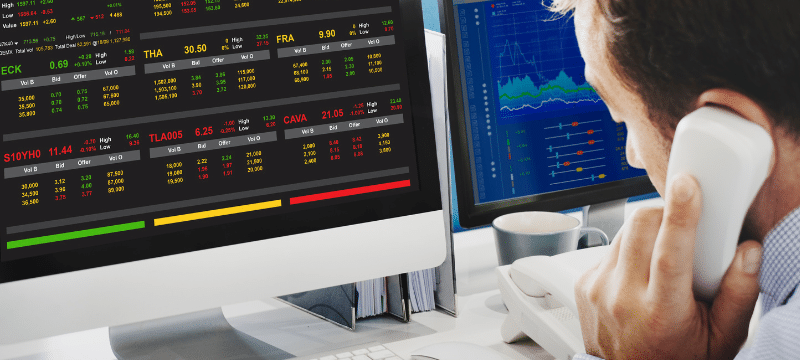How to Use AI for Forex Trading
Cloud

AI is enjoying a surge in popularity, thanks to the explosive increase in the amount of data in the cloud and substantial improvements in the technology to process it. Machine learning algorithms and AI-driven systems are already having a huge impact on the banking sector. That’s on top of the technology-driven enhancement the industry has enjoyed as the providers of Forex cloud hosting have allowed traders across the globe to execute trades in real time. The foreign exchange (Forex) market, the world’s largest financial market, has an average daily turnaround of around $8 trillion.
Forex trading has a unique affinity for AI technology, because of the sheer volume of transactions and 24/7 operations of the typical Forex trader, as well as the myriad of global economic, political, and social factors that influence each trade. The AI brain excels at analyzing these complex, interconnected variables.
In this article, we will explore the vulnerabilities and challenges of Forex trading, and how AI methodologies and tools can help address them.
The Challenges of Forex Trading
Due to the low barrier of entry, there are millions of Forex investors (about 14 million, by most estimates). All you need to start trading is a speedy and secure Internet connection and a trading platform.
But only a small percentage of traders would be considered successful by any measure. There is potential for great rewards in Forex trading, but also great risk. Because most Forex traders use leverage (make trades with borrowed money), the risks and potential rewards are significantly amplified.
Some of the specific challenges that face Forex traders include:
Failure to plan: To be a successful trader, you need a documented plan outlining risk management guidelines and the anticipated return on investment (ROI). Following a strategic trading plan will help you avoid some of the most typical trading hazards. Without a plan, you’re underestimating your potential for success.
Making expensive mistakes: It’s inefficient to trade any market by uncovering the right trading methods from your mistakes. Because the forex market differs greatly from the stock market, novice traders could experience losses that wipe out their accounts. Gaining knowledge from other successful traders is a more effective approach to becoming a profitable forex trader.
Lack of discipline: Letting emotions dictate your decisions is the biggest error you can make. A successful Forex trader will experience numerous minor losses mixed in with a few large wins. A chain of losses in a row can be emotional, and will almost certainly test your self-confidence. Greed can cause traders to lose control of their trades, and increase their losses substantially.
Poor risk management: For fear of being stopped too soon, you might trade without protection and avoid using stop losses and similar strategies. The importance of capital preservation increases with the size of the trading account. Diversifying trading tactics and currency pairs can protect you against irreversible losses when combined with the right position size.
AI’s Role in the Forex Field
Here’s how the strengths and unique capabilities of AI and machine learning technology can help you fix the vulnerabilities inherent to Forex trading.
Wide-Range Data Analyses
AI tools can bring you market data from a variety of sources, such as news releases, economic indicators, and past pricing information. You can utilize AI to examine correlations, trends, and patterns that other traders might not see. With its data-driven approach, AI can generate trading signals and predict future movements in the market.
Automation and Supervision
To perform trades based on predetermined criteria and rules – you can utilize trading robots. These are automated trading systems that can run 24 hours a day, allowing you to profit from market opportunities even when not actively following the market. AI-powered tools will allow you to focus on strategy formulation and analysis by automating repetitive tasks, freeing up your time and mental energy.
Adaptation and Improvement
Machine learning algorithms learn from prior market behavior by being trained on historical data and then teach you what’s going on. This capability is crucial in a dynamic market like Forex, where trading conditions can quickly change. You can improve your trading method by machine learning algorithms based on fresh data, thus improving your performance.
Risk Management
Effective risk management is crucial to prevent substantial losses. AI systems can advise you of a transaction’s ideal position size and risk tolerance and can analyze numerous risk indicators, including volatility, liquidity, and market sentiment. Using AI-powered risk management solutions reduces the emotional biases resulting in spontaneous decisions and protects your funds against disproportionate drops.
Removing Emotional Influence
AI technology has also made progress in sentiment analysis, by analyzing the viewpoints about the market and feelings expressed in news and social media. Sentiment analysis algorithms can evaluate market sentiment by examining text data and advise you on positive or negative sentiment indicators.
How ML-Based Models Can Predict the Future
The robots have been busy learning financial operations. Because they are able to analyze reams of historical information and pair it with real-time market data, they can identify patterns that are often invisible to the human eye.
ML tools can help us make more informed decisions about when to buy or sell currency pairs. There are different algorithms that can use Forex datasets like historical price data, economic indicators, and global financial news to predict future currency movements. Here are a few of the most popular trading models and how they work:
- Linear Regression: This direct approach models the relationship between dependent and independent variables in Forex data. It’s useful for its simplicity and effectiveness in identifying trends.
- Support Vector Machines (SVMs): SVMs can be applied in classification tasks. In Forex, they can analyze datasets to categorize market trends as bluffing, or convincing, helping you in decision-making.
- Neural Networks: They imitate the human brain and are powerful in recognizing subtle patterns in market datasets. They can be integrated in Forex prediction software to determine future price movements based on historical trends and fundamental data.
- Random Forest: This method combines multiple decision trees to improve accuracy and reduce overfitting, making it a great choice for Forex market analysis.
- Recurrent Neural Networks (RNNs): Suitable for sequential data, RNNs can effectively analyze time-series market data and capture dynamic changes over time.
AI’s Real-Time Forex Market Insights
AI can provide you with many advantages for Forex analysis. Its integration into Forex prediction software may enhance your trading strategy in multiple ways:
- Better market understanding: AI helps in analyzing historical market data, providing a deeper understanding for informed decision-making.
- Real-Time data analysis: Algorithms can assist you in analyzing vast amounts of real-time data, which is crucial for accurate Forex daily analysis and prediction.
- Automated trading: AI algorithms can automate your buying and selling process, which may increase efficiency and reaction speed to market changes.
- Accuracy in analysis: Software based on machine learning conducts superior analyses, making you a more precise and timely trader.
- Risk reduction: By minimizing human error and maintaining consistency, machine learning will reduce your trading risks, contributing to safer trading transactions.
Roadblocks in AI Adaptation
While there’s so much to be gained by implementing AI into your trading operations, there are challenges can that often interfere with the ability of many traders to properly harness its power.
Data Quality and Availability
Forex markets can produce incomplete or noisy data. Machine learning algorithms are based on those data, which can jeopardize the reliability of your market analyses.
Model Robustness
It’s not easy to develop effective algorithms for Forex trading. There’s a risk of overfitting, where the method performs well on training data, but poorly in real-world scenarios.
Regulatory and Compliance Considerations
There are strict regulations on currency markets, and incorporating AI must align with these regulatory requirements, which can vary significantly around the world.
Resource Requirements
Implementing AI will require significant computational resources and expertise, which can be costly, especially for smaller traders.
Conclusion
AI can significantly upgrade your Forex trading by providing enhanced analyses, accuracy, and decision-making capabilities. You’ll still face challenges like complexity, data quality, and regulatory compliance, but the proper use of AI tools can help you understand and navigate the market smoothly.


